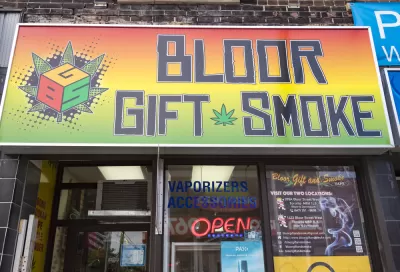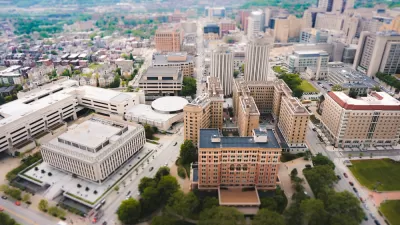The Philadelphia Planning Commission voted to recommend several changes to the zoning code, including changes to allow for the selling and growing of medicinal marijuana.

Medicinal marijuana was legalized in the Commonwealth of Pennsylvania in the Spring of 2015, licensing is set to begin in 2017, and the Philadelphia Planning Commission and its planning staffers are working diligently to see that the appropriate zoning changes are made to accommodate the medicinal marijuana market. It was made clear, however, that these proposed changes are specific only to medicinal marijuana, and should Pennsylvania ever legalize recreational use, future zoning changes would need to be made.
"The policy [Paula Brumbelow] Burns presented would allow growing marijuana in many types of industrial districts (I-1, I-2, and I-3). There are no setback requirements for marijuana growing facilities because all the work will be done inside. Burns emphasized that the state is monitoring the nascent industry so closely that even the types of fertilizers and pesticides will be regulated," writes Jake Blumgart of PlanPhilly.
Additionally, while the Commonwealth has adopted distancing requirements for the dispensaries, given that Philadelphia is far denser than many other areas of the state, it is allowing Philadelphia to create its own distancing requirements.
"The dispensaries will be allowed in most commercial zoning districts with a couple notable exceptions, including CA-1, which promotes auto-oriented uses, and CMX-1, which allows neighborhood bodegas and such. The shops must be 1,000 feet from regulated uses—like pawn shops, check cashing, strip clubs—and 500 feet from protected uses like schools, churches, and public recreation facilities."
"The commission voted unanimously to recommend the legislation."
FULL STORY: Planning Commission weighs in on medical marijuana, Logan Triangle zoning

Alabama: Trump Terminates Settlements for Black Communities Harmed By Raw Sewage
Trump deemed the landmark civil rights agreement “illegal DEI and environmental justice policy.”

Study: Maui’s Plan to Convert Vacation Rentals to Long-Term Housing Could Cause Nearly $1 Billion Economic Loss
The plan would reduce visitor accommodation by 25% resulting in 1,900 jobs lost.

Why Should We Subsidize Public Transportation?
Many public transit agencies face financial stress due to rising costs, declining fare revenue, and declining subsidies. Transit advocates must provide a strong business case for increasing public transit funding.

Wind Energy on the Rise Despite Federal Policy Reversal
The Trump administration is revoking federal support for renewable energy, but demand for new projects continues unabated.

Passengers Flock to Caltrain After Electrification
The new electric trains are running faster and more reliably, leading to strong ridership growth on the Bay Area rail system.

Texas Churches Rally Behind ‘Yes in God’s Back Yard’ Legislation
Religious leaders want the state to reduce zoning regulations to streamline leasing church-owned land to housing developers.
Urban Design for Planners 1: Software Tools
This six-course series explores essential urban design concepts using open source software and equips planners with the tools they need to participate fully in the urban design process.
Planning for Universal Design
Learn the tools for implementing Universal Design in planning regulations.
Caltrans
Smith Gee Studio
Institute for Housing and Urban Development Studies (IHS)
City of Grandview
Harvard GSD Executive Education
Toledo-Lucas County Plan Commissions
Salt Lake City
NYU Wagner Graduate School of Public Service





























